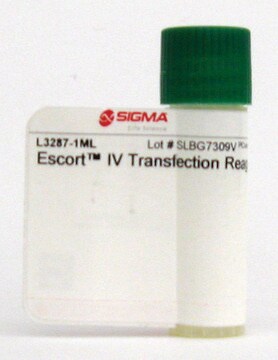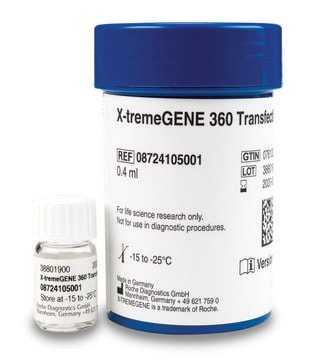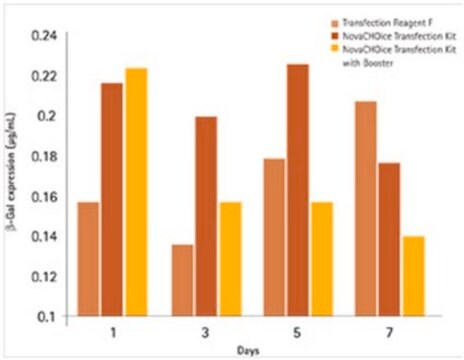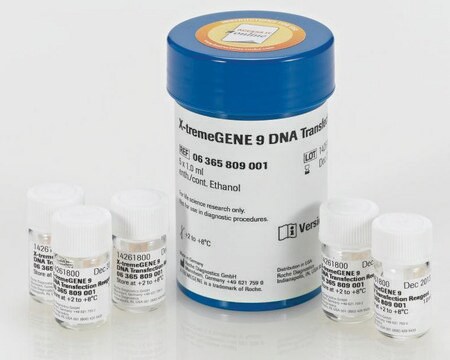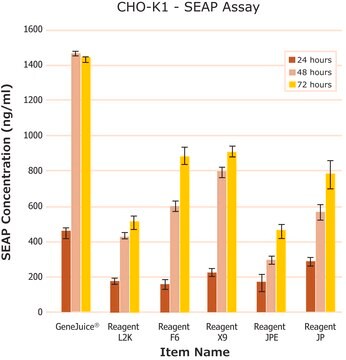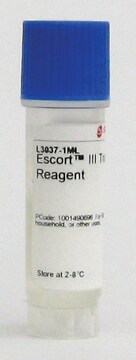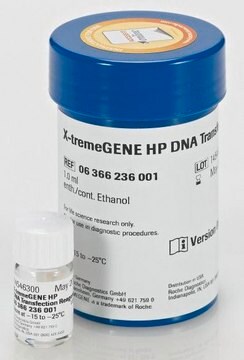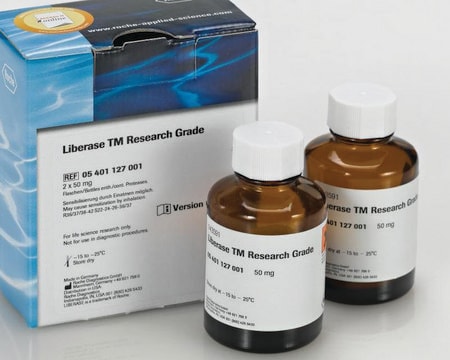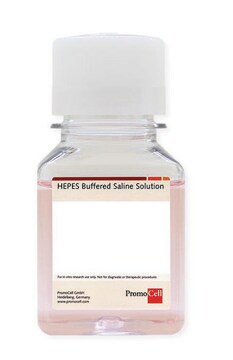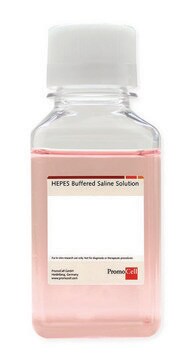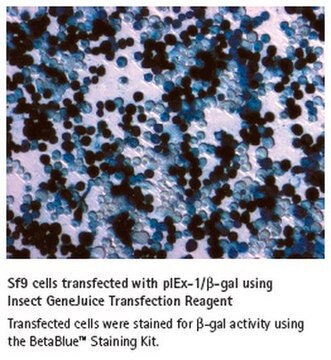CAPHOS
Calcium Phosphate Transfection Kit
Most cost effective transfection reagent kit for transient and stable transfection of DNA into mammalian cells
Sinonimo/i:
Gene delivery
About This Item
Prodotti consigliati
Grado
for molecular biology
Livello qualitativo
Stato
solution
impiego
kit sufficient for 160 transfections (6 cm dishes)
kit sufficient for 400 transfections (3.5 cm dishes)
kit sufficient for 80 transfections (10 cm dishes)
tecniche
transfection: suitable
Condizioni di spedizione
dry ice
Temperatura di conservazione
−20°C
Descrizione generale
Applicazioni
- to enable transfection
- to transfect Hek293T cells
- to transfect H29D cells
BAEC
Bowels melanoma cells
CHO K1
COS-7
Fibroblasts (human embryonic, neo derm)
HEK293
Huh 7
IMR-90
LLC (Lewis Lung Carcinoma)
NIH3T3
PC-12
PCI-13
SH-Sy5Y
SK-Hep-1
T47D
Caratteristiche e vantaggi
- Suitable for transient and stable transfection
- Reproducible for a wide range of cell types
- Widely referenced
- Inexpensive
Componenti
5 ml 2.5M CaCl2 (C2052)
25 ml 2x HEPES Buffered Saline (H1012)
25 ml molecular biology grade water (W4502)
Principio
Altre note
Prodotti correlati
Avvertenze
Warning
Indicazioni di pericolo
Consigli di prudenza
Classi di pericolo
Eye Irrit. 2
Codice della classe di stoccaggio
12 - Non Combustible Liquids
Punto d’infiammabilità (°F)
Not applicable
Punto d’infiammabilità (°C)
Not applicable
Scegli una delle versioni più recenti:
Possiedi già questo prodotto?
I documenti relativi ai prodotti acquistati recentemente sono disponibili nell’Archivio dei documenti.
I clienti hanno visto anche
Articoli
Transfection is the introduction of DNA, RNA, or proteins into eukaryotic cells and is used in research to study and modulate gene expression. Thus, transfection techniques and protocols serve as an analytical tool that facilitates the characterization of genetic functions, protein synthesis, cell growth and development.
This brief webinar provides an overview of what transfection is and the methods that are used to introduce DNA or RNA into eukaryotic cells.
Protocolli
Calcium Phosphate Transfection Kit Protocol
Il team dei nostri ricercatori vanta grande esperienza in tutte le aree della ricerca quali Life Science, scienza dei materiali, sintesi chimica, cromatografia, discipline analitiche, ecc..
Contatta l'Assistenza Tecnica.